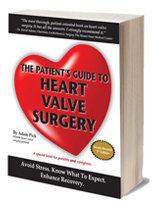Heart Valve Pictures: Regular & Diseased Heart Valves
Written By: Adam Pick, Patient Advocate, Author & Website Founder
Page Last Updated: June 11, 2025
I’ll never forget my second opinion from Dr. Michael Chaikin, a cardiologist in Los Angeles, California.
Dr. Chaikin wanted a real-time echocardiogram done in his office… Unlike many cardiologist, Dr. Chaikin was actually present during the diagnostic test. He studied the monitor as it flashed pictures of my beating heart and pictures of my heart valves. I studied the monitor as well – with great purpose and intent. But, I had no idea what I was looking for.
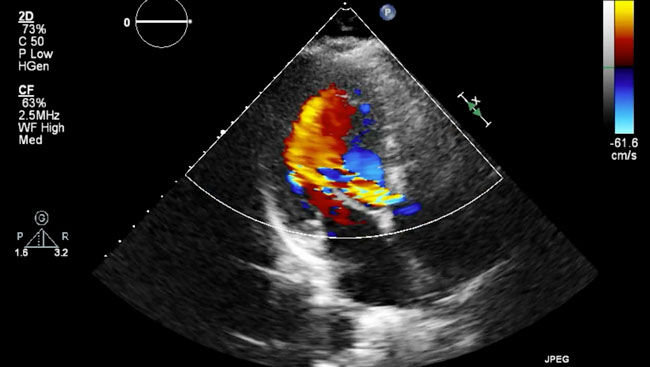
As it turns out… Eight weeks later, I would find myself having double heart valve replacement surgery via the Ross Procedure. Similar to most patients, I became more interested in heart valve anatomy once I scheduled my open heart surgery with Dr. Vaughn Starnes.
One of the questions I had was, “What does a heart valve really look like?”
I knew my bicuspid aortic valve was a congenital defect. But, I didn’t really understand the impact of having two leaflets versus three leaflets. That said, I started looking for heart valve pictures. Here’s a quick diagram of a normal aortic valve with 3 leaflets and a bicuspid aortic valve with 2 leaflets fused together.

For context, you may want to see a a human heart diagram to understand how the valves are located in the heart. In the diagram below, you can see the position of the aortic valve, the mitral valve, the pulmonary valve and the tricuspid valve. Each valve can experience different congenital and degenerative types of disease. As you can see below, most heart valves have three leaflets, while the mitral valve only has two leaflets.
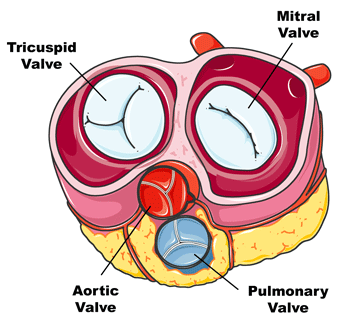
To start, here is a picture of an actual normal heart valve. You can see how the leaflets are nice and clean with no calcium build-up on the valve. Calcium build-up which can lead to stenosis, or a narrowed valve, this is a very insidious and dangerous disease.
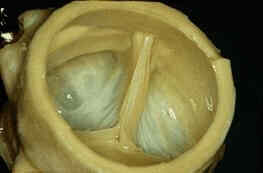
Now, let’s compare that to an aortic valve with severe disease. As you can see below, the valve cusps are rigid and deformed due to the calcification of the heart valve. This is one of the reasons I needed to have heart valve surgery, my bicuspid aortic valve was very calcified. To learn more about calcified valves, click here.
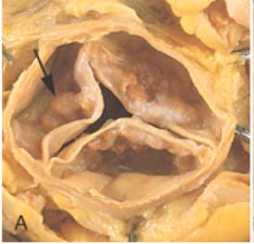
Calcified Aortic Valve
The more calcified the valve, the more stenotic, debilitating and life-threatening the cardiac condition can be. Here is a chart showing how aortic stenosis can progress over a patient’s lifetime.
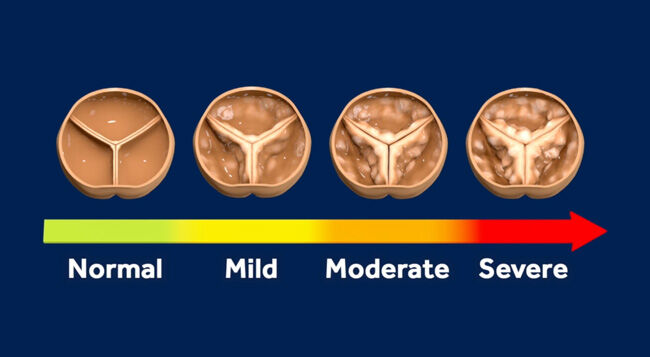 Aortic Stenosis Progression
Aortic Stenosis Progression
As for the mitral valve, the picture below shows a normal mitral valve and several different types of mitral valve disease including degenerative mitral regurgitation caused by mitral valve prolapse, flail leaflets and functional defects. In this diagram, you will note how the blood falls back through the heart due to the improper functioning of the mitral valve. Mitral valve regurgitation is also known as a “leaky heart valve”. To learn more about mitral valve prolapse, click here.
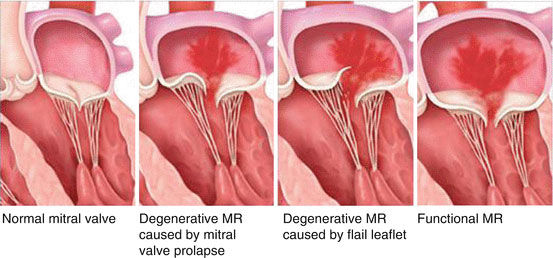
It’s important to note that mitral valve disease may also be caused due to issues with the mitral valve chordae which are important physical structure that support normal functioning of the mitral valve.
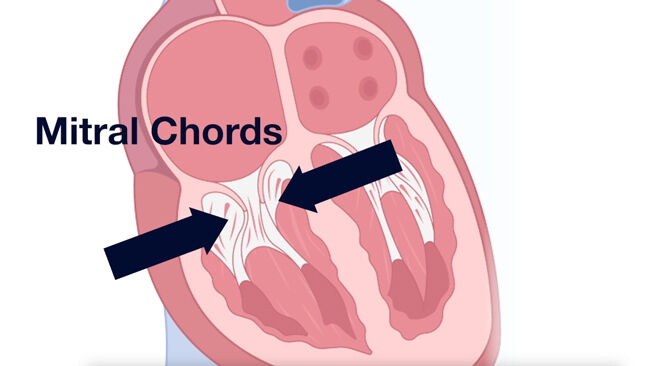
I hope this helped you better understand regular valves and different types of heart valve disease.
Related Links:
- Aortic Stenosis: Symptoms, Causes and Treatment
- The Aortic Stenosis “Danger Zone” Is Here
- Mitral Regurgitation: What Should Patient Know?
- Mitral Valve Chordae: Top 4 Facts
Keep on tickin!
Adam
|
Rhonda Curtis says on December 6th, 2011 at 5:56 pm |
|
I just wanted to let you know i bought your book in MAy of this year and was very thankful i did,My 33 year old son had to have a heart valve replacement at the end of June And i really needed to know what to expect,And boy you let me know,If i had not read your book i would not have been as prepared as i was,especially about being in the ICU on a vent.My son’s surgery did not go as expected tho,complication,His heart was very enlarged and had to have complete by pass,replaced 3 arteries ,had the mechanical valve put in,And then when they took him of pump, and thought all was good his heart stopped working,They put him back on and was taken to ICU where he was for 12 LONG days,Things did get better after all this and is doing well.But your book was so helpful to me as he stayed with me for 3 weeks,got angry,agitated,depredded,but i was ready for it,Watched him with pain meds,very carefully also.Thank you for your great information ,It was truly a blessing to hear it from someone young who knew what he was facing., |
 |





